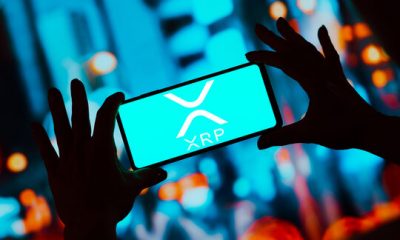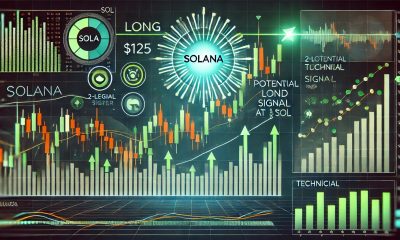

Blockchain
The CFO and Treasurer’s Guide to Digital Assets – Crypto News
Blockchain technology was meant to disrupt payments and finance. But while the payments space, at least in the U.S., remains in waiting for a crypto-led transformation, it is across capital markets where traditional approaches are already undergoing a quiet on-chain revolution thanks to the tokenization of real-world assets (RWAs).
With the news this week that private equity and insurance giant Apollo has made a strategic investment in Plume, a blockchain platform focused on RWAs, boardrooms and treasury offices are now paying closer attention to efficiencies gained by turning real-world assets into digital ones through tokenization.
The Plume investment follows Apollo’s January partnership with RWA infrastructure provider Securitize to tokenize investment opportunities.
As digital transformation reshapes capital markets, RWAs represent a potent convergence of blockchain technology and traditional finance. For chief financial officers (CFOs) and corporate treasurers charged with steering balance sheets, optimizing liquidity and mitigating risk, RWAs could offer both compelling opportunities as well as new layers of complexity.
Unlike cryptocurrencies, which derive their value from consensus and scarcity, RWAs are anchored in real-world value and can often generate cash flow. For CFOs, this shift signals a move from speculative digital assets toward instruments that might be able to play tangible roles in liquidity management, yield generation and even collateralization strategies.
Read also: Need for On-Chain Trust Grows as AI Agents Flood Crypto
The Institutional Shift Toward RWAs
Real-world assets are tangible or intangible assets — such as U.S. Treasuries, real estate, invoices, carbon credits, securities or even art — that have been tokenized and placed on a blockchain. Tokenization refers to the process of issuing a digital token that represents ownership or a claim on an underlying asset. These digital representations are often embedded with smart contracts that automate compliance, yield disbursements and governance functions.
Once these assets are tokenized, organizations and enterprises can take advantage of automated processes on various blockchains which can reduce transaction fees, streamline settlement times and enhance operational efficiency. Additionally, tokenizing traditionally illiquid assets makes them easier to buy, sell and trade on secondary markets.
Major financial players, and not just Apollo, are taking RWAs seriously. BlackRock recently launched its first tokenized fund on the Ethereum blockchain, backed by short-term U.S. Treasurys. JPMorgan’s Onyx platform has already settled billions in tokenized collateral transfers, while Citigroup partnered with Wellington Management and WisdomTree to explore the tokenization of private markets.
Earlier this year, it was also announced that Ondo Finance would be the first provider to bring real-world assets to Mastercard’s Multi-Token Network (MTN).
“Banks are in the state where they are thinking about blockchains as public infrastructure that they need to rely on,” Chainalysis Co-founder and CEO Jonathan Levin told PYMNTS. “Back in 2014 … cryptocurrency only meant blockchains that had native cryptocurrency tokens. Today, people are putting all types of financial instruments on the blockchain.”
For CFOs and treasurers responsible for safeguarding corporate capital and ensuring optimal deployment, RWAs present novel use cases across several financial disciplines.
See also: Stablecoin Sandwiches? Here’s What CFOs Need to Know About Crypto Jargon
Strategic Considerations for CFOs and Treasurers
Digital asset fluency is quickly becoming a core competency for finance teams. The blockchain can offer CFOs and treasurers a powerful toolkit, but, like all advanced technologies, it is one that must be wielded with precision and foresight.
PYMNTS Intelligence this year found that blockchain technology has numerous potential benefits to serve the unique needs of regulated industries, including finance, healthcare, identity verification and supply chain management, to name a few.
But holding tokenized assets requires secure digital custody solutions. Custodians must be vetted not only for cybersecurity but also for their legal and compliance frameworks. Additionally, many RWA platforms still rely on centralized issuers who can pose operational or credit risk.
Among the biggest uncertainty impacting the RWA space, just as with the rest of the on-chain economy, is the lack of operational clarity around regulation in the U.S. marketplace. But the tide is beginning to turn.
“The largest financial institutions are eager to explore tokenized assets,” Nikola Plecas, head of commercialization, Visa Crypto, told PYMNTS, but added that they require regulatory certainty to do so at scale.
PYMNTS covered Wednesday (April 9) how crypto industry participants and attorneys told a House subcommittee that existing regulations from the SEC lack clarity and are outdated, while the lawmakers in attendance said new legislation tied to market structure and oversight would be forthcoming.
-
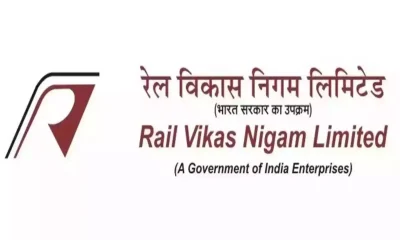
 Cryptocurrency5 days ago
Cryptocurrency5 days agoRVNL Share Price Crashes Toward ₹317 as PSU Rail Stocks Tank on Global Panic – Crypto News
-

 Technology1 week ago
Technology1 week agoWhy Is The Bitcoin Price Surging Today? – Crypto News
-

 Technology1 week ago
Technology1 week agoWhy Is The Bitcoin Price Surging Today? – Crypto News
-

 Business6 days ago
Business6 days agoIs DOGE Decoupling from Elon Musk? – Crypto News
-

 others5 days ago
others5 days agoGold struggles to capitalize on intraday recovery from multi-week low; remains below $3,050 – Crypto News
-

 others5 days ago
others5 days agoGold struggles to capitalize on intraday recovery from multi-week low; remains below $3,050 – Crypto News
-

 others5 days ago
others5 days agoGold struggles to capitalize on intraday recovery from multi-week low; remains below $3,050 – Crypto News
-

 Technology1 week ago
Technology1 week agoChatGPT overload? Sam Altman pushes GPT-5 to later date, confirms new model launches this month – Crypto News
-

 Blockchain6 days ago
Blockchain6 days agoA defendant tried to use an AI avatar in a legal appeal. It didn’t work – Crypto News
-

 others6 days ago
others6 days ago$109,000,000,000 in US Gold Reserves Now in Question as German Officials Demand to Count Bullion Bars At New York Fed: Report – Crypto News
-

 Technology5 days ago
Technology5 days agoAs audio streaming comes of age, companies turn to AI for a growth slingshot – Crypto News
-
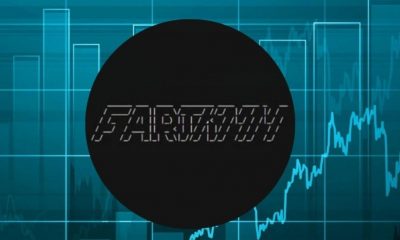
 Cryptocurrency1 week ago
Cryptocurrency1 week agoMeme Crypto Rebounds Amid Market Volatility – Crypto News
-

 Technology6 days ago
Technology6 days agoWeekly Tech Recap: ChatGPT generates fake Aadhaar cards, Meta rolls out new Llama 4 AI models and more – Crypto News
-

 Blockchain6 days ago
Blockchain6 days agoCrypto plunges as Trump tariff ‘medicine’ brutalizes global stock markets – Crypto News
-

 Blockchain6 days ago
Blockchain6 days agoDogecoin Volume Remains Low As Price Tanks, Analyst Says Another Surge Is Coming – Crypto News
-

 Technology6 days ago
Technology6 days agoArthur Hayes Expects Fed Rate Cuts Soon If This Happens – Crypto News
-

 Technology6 days ago
Technology6 days agoArthur Hayes Expects Fed Rate Cuts Soon If This Happens – Crypto News
-

 Technology6 days ago
Technology6 days agoArthur Hayes Expects Fed Rate Cuts Soon If This Happens – Crypto News
-
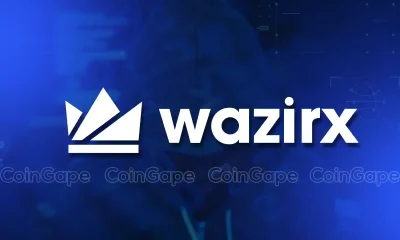
 Business5 days ago
Business5 days agoDebt Restructuring Plan Gains Support, User Funds Recovery Imminent? – Crypto News
-

 others5 days ago
others5 days agoDebt Restructuring Plan Gains Support, User Funds Recovery Imminent? – Crypto News
-

 others5 days ago
others5 days agoOffered zero-for-zero tariffs to US for cars and all industrial goods – Crypto News
-

 Technology5 days ago
Technology5 days ago4 Altcoins to Sell As Crypto Market Crash Triggers $1.4B in Liquidations – Crypto News
-

 Cryptocurrency5 days ago
Cryptocurrency5 days agoEthereum DApps are thriving with $1B in fees, but what about ETH’s price? – Crypto News
-

 Blockchain5 days ago
Blockchain5 days agoMetaplanet repays 2B yen bonds early, CEO comments on BTC ‘down days’ – Crypto News
-

 others5 days ago
others5 days agoMassive Counter-Trend Rally Could Be Coming for Bitcoin (BTC), According to Benjamin Cowen – Here’s When – Crypto News
-

 Cryptocurrency5 days ago
Cryptocurrency5 days agoPeter Schiff Predicts Ethereum Price To Drop Below $1,000, Compares It To Bitcoin And Gold – Crypto News
-

 others5 days ago
others5 days agoEuro eases slightly near 1.0900 but maintains bullish bias – Crypto News
-

 Business5 days ago
Business5 days ago4 Reasons This is a Golden Opportunity to Buy Pi Coin – Crypto News
-

 Blockchain5 days ago
Blockchain5 days agoBitcoin on verge of largest ‘price drawdown’ of the bull market — Analyst – Crypto News
-

 Technology1 week ago
Technology1 week agoGoogle and Amazon Seek Government Software Market Share – Crypto News
-

 Technology1 week ago
Technology1 week agoUS SEC Rules Dollar-Backed Stablecoins Are Not Securities Under Federal Laws – Crypto News
-

 Business6 days ago
Business6 days agoKey Levels ETH Traders Must Watch as BTC Trades Below $80K – Crypto News
-

 Blockchain6 days ago
Blockchain6 days agoBest Meme Coins to Buy as Solana TVL Reaches All-Time High – Crypto News
-

 Cryptocurrency6 days ago
Cryptocurrency6 days agoBitcoin’s price consolidates, but altcoins drop: Breaking down how and why – Crypto News
-

 Technology6 days ago
Technology6 days agoSave big on ACs, refrigerators, chimneys and more in Amazon Summer Fest: Get up to 60% off on home appliances – Crypto News
-

 Cryptocurrency5 days ago
Cryptocurrency5 days agoPanic Hits Crypto, Stocks, and Commodities at Levels Not Seen Since 2020 Covid Crash – Crypto News
-

 Blockchain5 days ago
Blockchain5 days agoBitcoin Dips Below $75K As Markets Tremble: What’s Goin On? – Crypto News
-

 Technology5 days ago
Technology5 days agoDebt Restructuring Plan Gains Support, User Funds Recovery Imminent? – Crypto News
-

 Technology5 days ago
Technology5 days agoForget ChatGPT? China’s DeepSeek is working on smarter, self-improving AI models – Crypto News
-

 Blockchain5 days ago
Blockchain5 days agoEthereum Price Looks Set To Crash To $1,000-$1,500, But Can It Fill The CME Gaps Upwards To $3,933 – Crypto News
-

 Business5 days ago
Business5 days agoShould You DCA These 3 Crypto Tokens This Black Monday for 5X Gains in April? – Crypto News
-

 Blockchain5 days ago
Blockchain5 days agoBitcoin Goes Beast Mode—Mining Power Tops 1 Zetahash in First-Ever Surge – Crypto News
-

 Technology5 days ago
Technology5 days agoArthur Hayes Predicts 70% Bitcoin Dominance as BTC Whales Hit Peak Accumulation – Crypto News
-

 Blockchain5 days ago
Blockchain5 days agoBloomberg analyst predicts Bitcoin could sink back to $10,000 – Crypto News
-

 Technology5 days ago
Technology5 days agoSamsung Galaxy S25 Edge appears online ahead of launch: Specs, pricing and colours tipped – Crypto News
-

 Blockchain5 days ago
Blockchain5 days agoCrypto Analyst Warns Of Volume Drop That Could Trigger 60% Bitcoin Price Crash To $49,000 – Crypto News
-
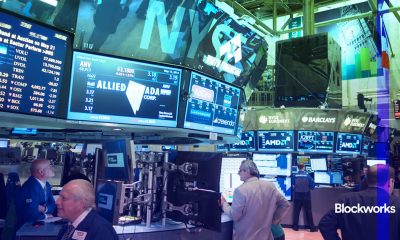
 Cryptocurrency5 days ago
Cryptocurrency5 days agoVIX shows volatility will not be stopping anytime soon – Crypto News
-
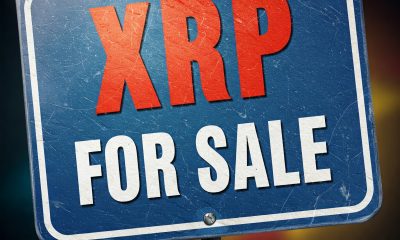
 Blockchain5 days ago
Blockchain5 days agoXRP Dump? Engineer Says Panic Selling Makes No Sense – Crypto News
-

 Cryptocurrency5 days ago
Cryptocurrency5 days agoBlackRock CEO Says Market Could Tank Another 20%—But It’s a ‘Buying Opportunity’ – Crypto News
-

 Technology5 days ago
Technology5 days agoMeity, dept of science working with Cert-In to build quantum cyber framework – Crypto News

